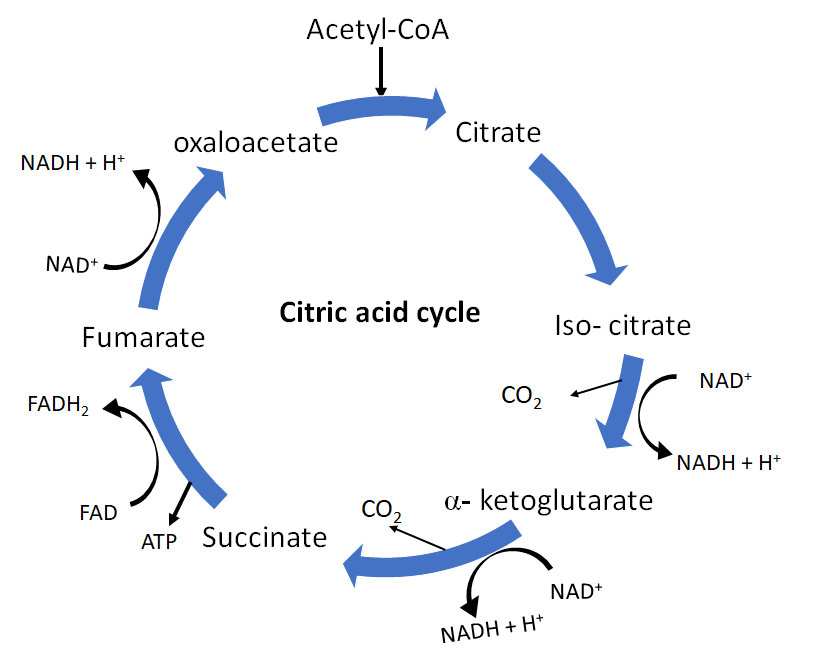Question
Question: What is the TCA cycle? Describe its different steps...
What is the TCA cycle? Describe its different steps
Solution
Various biochemical processes and cycles are carried out within the body of organisms. The TCA cycle is one such cycle. TCA stands for the chemical compound that is the first product of this reaction. It is used to generate the energy currency of the cells.
Complete answer:
TCA cycle or the tricarboxylic acid cycle is also known as the citric acid cycle (CAC) or the Krebs cycle is a series of chemical reactions used which occurs within all aerobic organisms to release stored energy through the oxidation of acetyl CoA which is derived from carbohydrates, fats, and proteins.
There are 8 steps in the TCA cycle. They are:
- Step 1: Acetyl CoA joins with a four- carbon molecule, oxaloacetate, releasing CoA group and forming a six- carbon compound called citric acid.
- Step 2: Citric acid is converted into its isomeric form, isocitric acid, or isocitrate. It is actually a two- step process, first involving the removal and then the addition of a water molecule. Due to this, sometimes the TCA cycle is said to have 9 steps, however, this whole reaction is considered to be one step.
- Step 3: Isocitrate is oxidized to release a molecule of carbon dioxide, leaving a five- carbon α- ketoglutarate molecule. During this step, NAD+ is reduced to form NADH. The enzyme isocitrate dehydrogenase catalyzes this reaction is very important in rate determination of the cycle.
- Step 4: Here α- ketoglutarate is oxidized, reducing NAD+ to NADH and releasing a molecule of carbon dioxide. The remaining four- carbon molecule picks up the Coenzyme A, forming an unstable succinyl CoA. This step is also a rate- determining step.
- Step 5: The CoA of succinyl CoA is replaced by a phosphate group, which is later transferred to ADP to make ATP. In some cells, guanosine diphosphate (GDP)is used, forming GTP. Four- carbon succinate is produced as a product of this reaction.
- Step 6: Succinate is oxidized, forming another four- carbon molecule fumarate. Two hydrogen atoms are transferred to FAD producing FADH2.
- Step 7: Water is added to the four- carbon molecule fumarate, converting it into malate.
- Step 8: Oxaloacetate is regenerated by oxidation of malate. Another molecule of NAD+ is reduced to NADH in the process.
One TCA cycle "turn" yields 1 GTP, 3 NADH, 1 FADH2 , 2 CO2 and based on the oxidation pathway they can produce 15 to 18ATP and since one glucose yields 2 Acetyl CoA, per glucose 30 to 38ATP are obtained.

Note: The Acetyl CoA that is required for this reaction can be obtained from the breakdown of either glucose, fats, or proteins and then enter this common pathway for the synthesis of ATP. Apart from all these products, the TCA cycle intermediate products are used for biosynthesis of other important compounds like amino acids, nitrogenous bases, etc.
